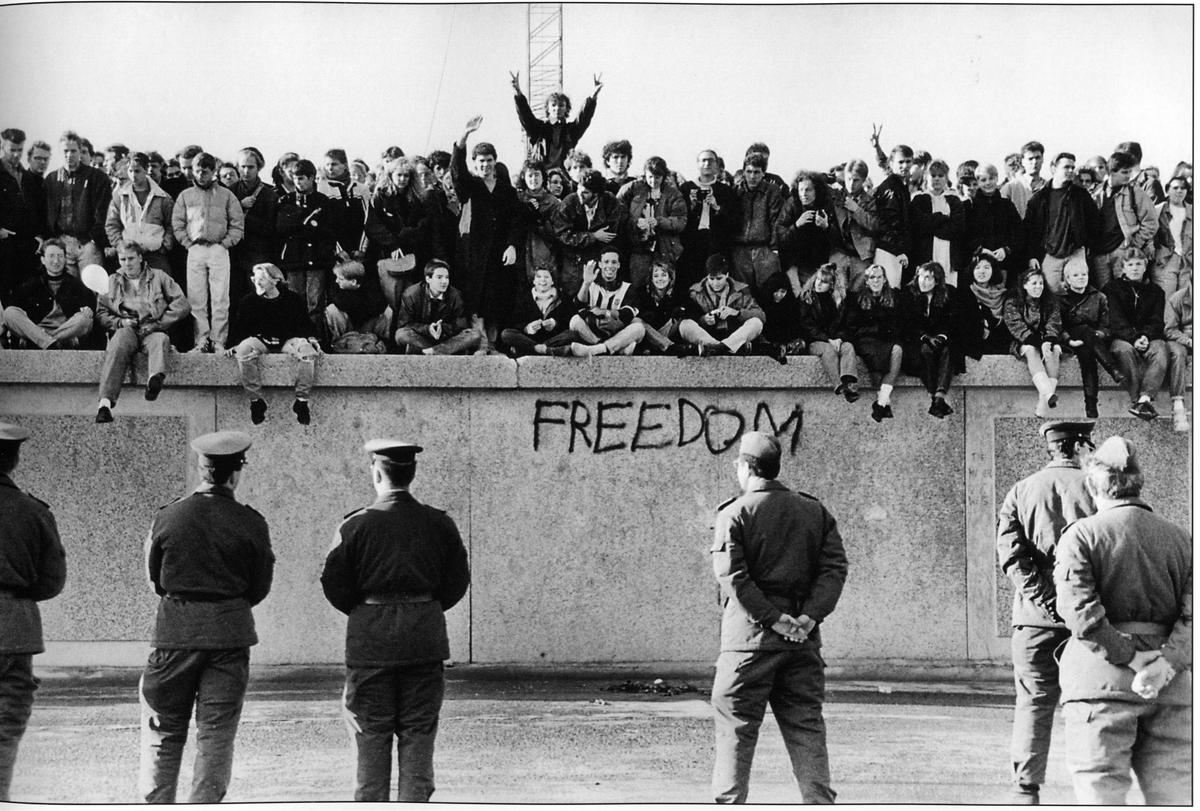It was a situation without precedent. Two halves of the city, once deadly enemies separated for 28 years by a virtually insurmountable wall, were suddenly to be reunited. The events that took place on the late evening of 9 November 1989 as the first columns of Trabants, [the inefficient but much-loved small East German cars, affectionately known as “Trabbis”] rolled into West Berlin, a city astounded by the sudden opening of the border, were replicated in the realms of German culture.
Artists, who previously were not too bothered about boundaries, could now practise in either part of the city, although it was non-artists, like the so-called “wall-peckers”, who occupied centre stage. Armed with hammers, they worked their way along the concrete wall, grabbing bits and pieces as souvenirs, while also demolishing the once heavily guarded barrier. The task took only a few weeks.
By far the most comprehensive artistic testimony to the opening of the Wall took the form of paintings in what immediately became known as the East Side Gallery. Along a one-kilometre stretch of the wall, artists, most of them from the western half of the city, painted hard-hitting images. A painted reworking of the brotherly kiss exchanged between the General Secretary of the Communist Party of the Soviet Union, Leonid Brezhnev, and the General Secretary of East Germany’s Socialist Unity Party of Germany, Eric Honecker, depicted a celebratory gesture which, even at the time, was perceived as a sham.
Indeed, after 7 October 1989, the supposedly glorious 40th anniversary of the founding of the German Democratic Republic (GDR), Honecker had little to celebrate. Mikhail Gorbachev had simply abandoned the GDR. This was a situation to which art had no immediate answer. The place for art, it seemed, was on the street. It was there in the instinctive choreography of citizens who struck up cross-border friendships and, after picking up their Begrüssungsgeld [the gift of 100 West German marks from the West German authorities to East German visitors prior to unification in 1990], swooped on the array of consumer goods in West Berlin’s shops.
Art could not keep pace with the changes in the real world. It would take time for artists to adjust. Events like the superb exhibition staged along the border strip between East and West Berlin in September 1990 entitled “Die Endlichkeit der Freiheit” (The Limits of Liberty), helped them to adapt to their still precarious situation. But rather than providing answers, it posed questions; questions about the possibilities for art suppressed by the state for so long.
• This article was first published in November 2014 under the headline: After the fall


